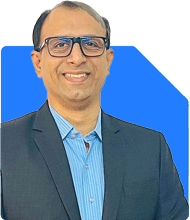Mahesh Padmanabhan | Answer |Ask -Follow
Tax Expert - Answered on May 03, 2023
He is a member of The Institute of Chartered Accountants of India and has a degree in cost accounting from the Institute of Cost Accountants of India.
He is also a qualified information systems auditor. ... more

Hello Sir, I am a US citisen living and working here in India on OCI. Please advise me weather I do returns filing just like how others in India do? Or are there any additional things to do? While I understand I also have to file returns in US, I would first do in India and take it to file in US for overcoming double taxation. Please advise. Also, how can you help and how do I reach you for a phone call. Thanks.
The requirement to file tax returns in India is based on your residential status and the volume of income. Hence, if you are currently a resident of India (based on number of days of stay in India) and your income is exceeding the threshold limit mandating the filing of tax returns then you definitely need to file the same.
There would be a gap in the period covered for filing tax returns viz., say India's financial year is between April 1, 2023 to March 31, 2024 whereas USA follows the calendar year concept i.e. January 1, 2023 to December 31, 2023.
When you prepare your data for USA, you would need to realign the income and the tax to validate the tax credit that could be claimed in USA
You may like to see similar questions and answers below
Vivek Lala |323 Answers |Ask -Follow
Tax, MF Expert - Answered on Jan 23, 2024
Mihir Tanna |1090 Answers |Ask -Follow
Tax Expert - Answered on Jan 22, 2024
Ramalingam Kalirajan |10908 Answers |Ask -Follow
Mutual Funds, Financial Planning Expert - Answered on Jul 26, 2024
Ramalingam Kalirajan |10908 Answers |Ask -Follow
Mutual Funds, Financial Planning Expert - Answered on Dec 20, 2025
Ramalingam Kalirajan |10908 Answers |Ask -Follow
Mutual Funds, Financial Planning Expert - Answered on Dec 20, 2025
Naveenn Kummar |237 Answers |Ask -Follow
Financial Planner, MF, Insurance Expert - Answered on Dec 20, 2025
Ramalingam Kalirajan |10908 Answers |Ask -Follow
Mutual Funds, Financial Planning Expert - Answered on Dec 19, 2025
Nayagam P P |10859 Answers |Ask -Follow
Career Counsellor - Answered on Dec 19, 2025
Ramalingam Kalirajan |10908 Answers |Ask -Follow
Mutual Funds, Financial Planning Expert - Answered on Dec 19, 2025
Ramalingam Kalirajan |10908 Answers |Ask -Follow
Mutual Funds, Financial Planning Expert - Answered on Dec 19, 2025
Ramalingam Kalirajan |10908 Answers |Ask -Follow
Mutual Funds, Financial Planning Expert - Answered on Dec 19, 2025
Radheshyam Zanwar |6751 Answers |Ask -Follow
MHT-CET, IIT-JEE, NEET-UG Expert - Answered on Dec 19, 2025
Radheshyam Zanwar |6751 Answers |Ask -Follow
MHT-CET, IIT-JEE, NEET-UG Expert - Answered on Dec 19, 2025



























